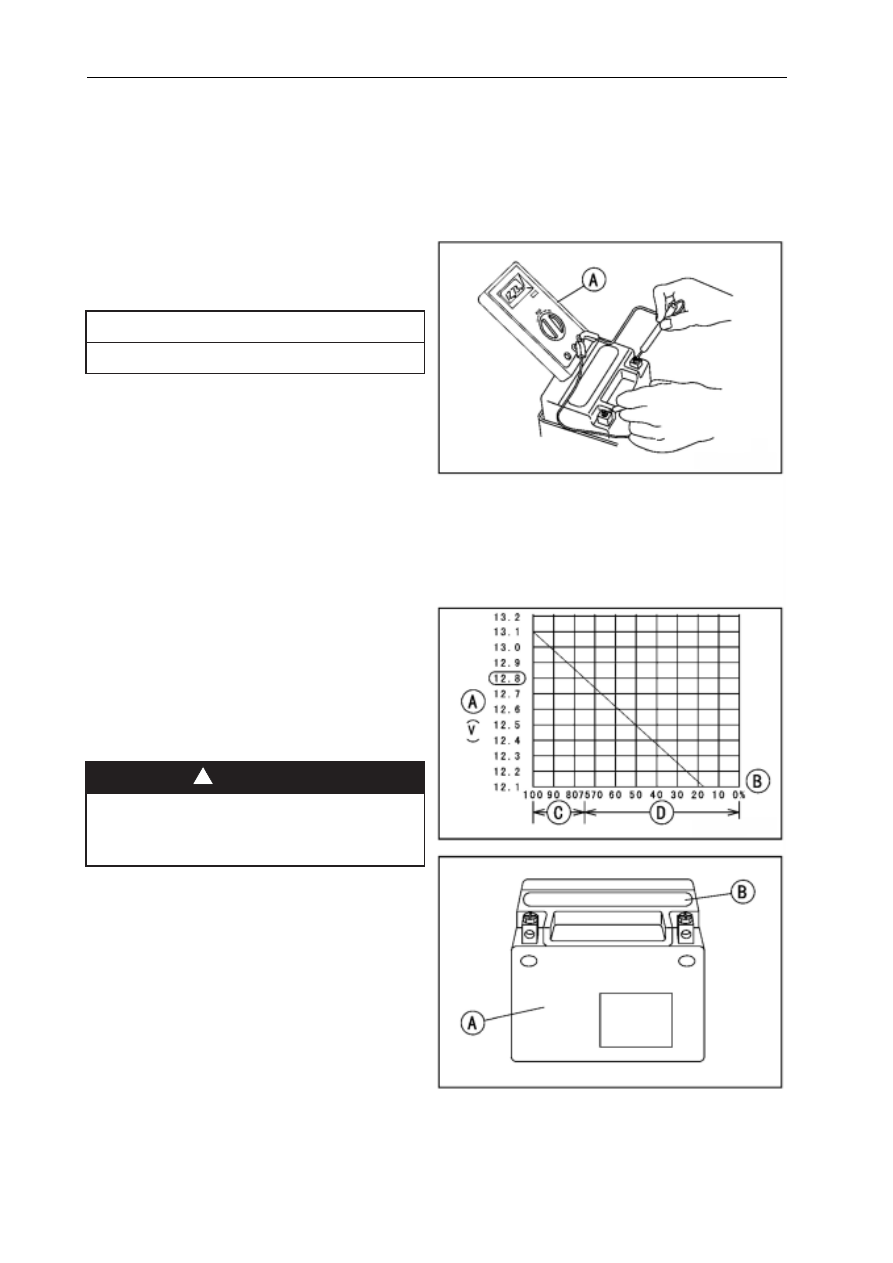CFMoto motorcycle CF650NK. Service Manual - part 33

16-14 ELECTRICAL SYSTEM
Battery
Charging Condition Inspection
Battery charging condition can be checked by mea-
suring battery terminal voltage with a digital voltmeter
[A].
Remove:
Seat (see Seat Removal in the Frame chapter)
Battery Cable Cap (see Battery Removal)
Disconnect the battery terminals.
Be sure to disconnect the negative (-) cable first.
N
O
I
T
U
A
C
Measure the battery terminal voltage.
NOTE
o
Measure with a digital voltmeter which can be read
one decimal place voltage.
If the reading is 12.8 V or more, no refresh charge
is required, however, if the read is below the
specified, refresh charge is required.
Battery Terminal Voltage
Standard: 12.8 V or more
Terminal Voltage (V) [A]
Battery Charge Rate (%) [B] Good [C]
Refresh charge is required [D]
Refreshing Charge
Remove the battery [A] (see Battery Removal).
Do refresh charge by following method according to
the battery terminal voltage.
This battery is sealed type. Never remove seal-
ing cap [B] even at charging. Never add water.
Charge with current and time as stated below.
!
WARNING
NG